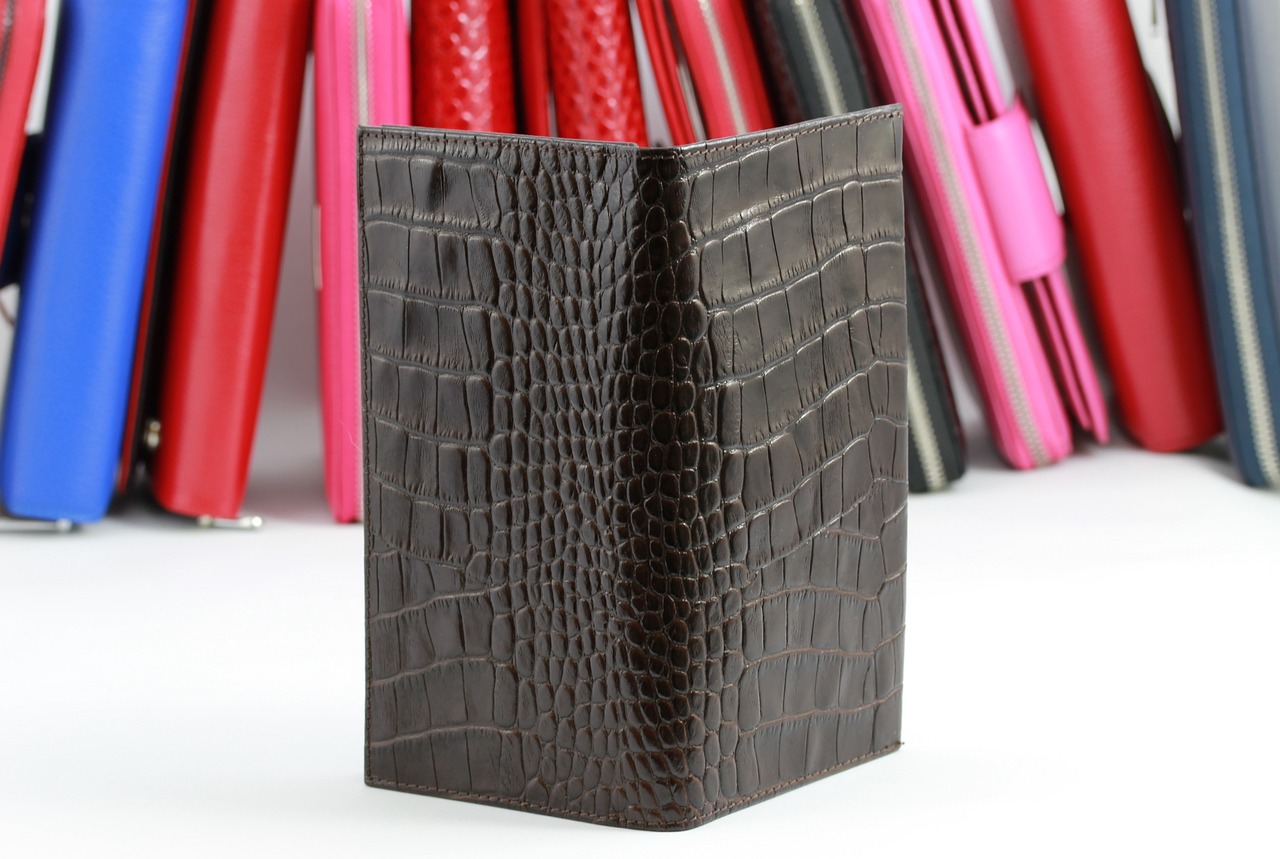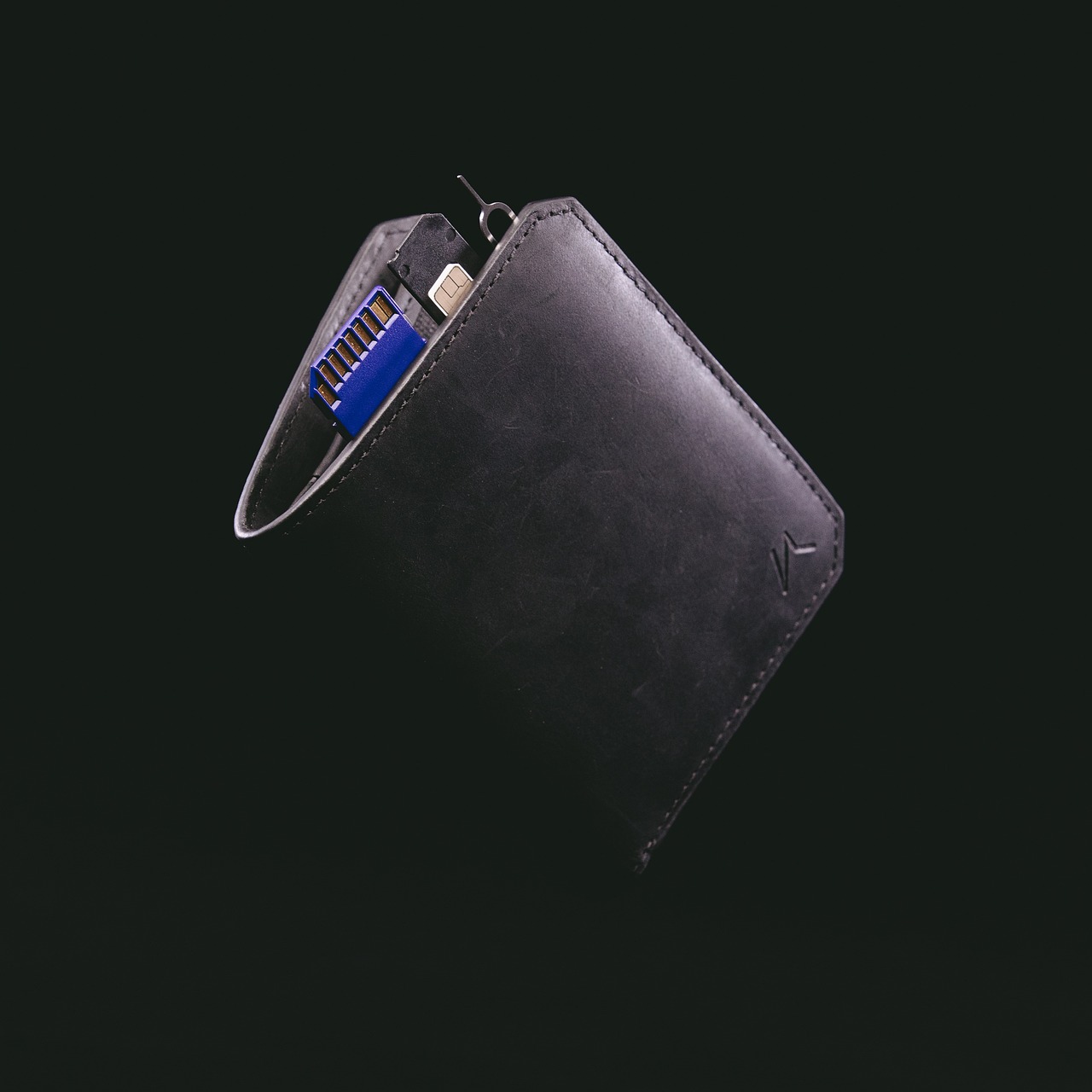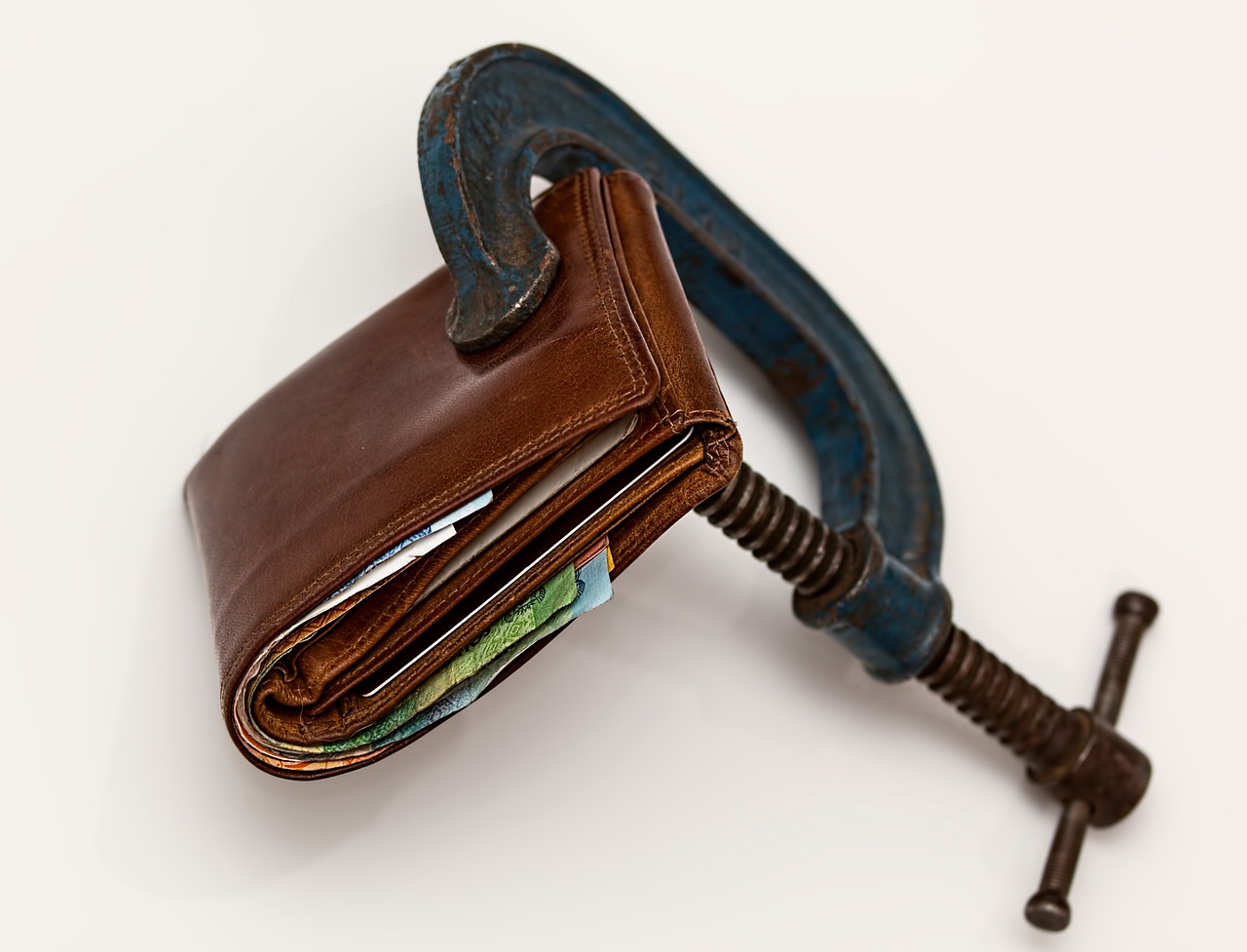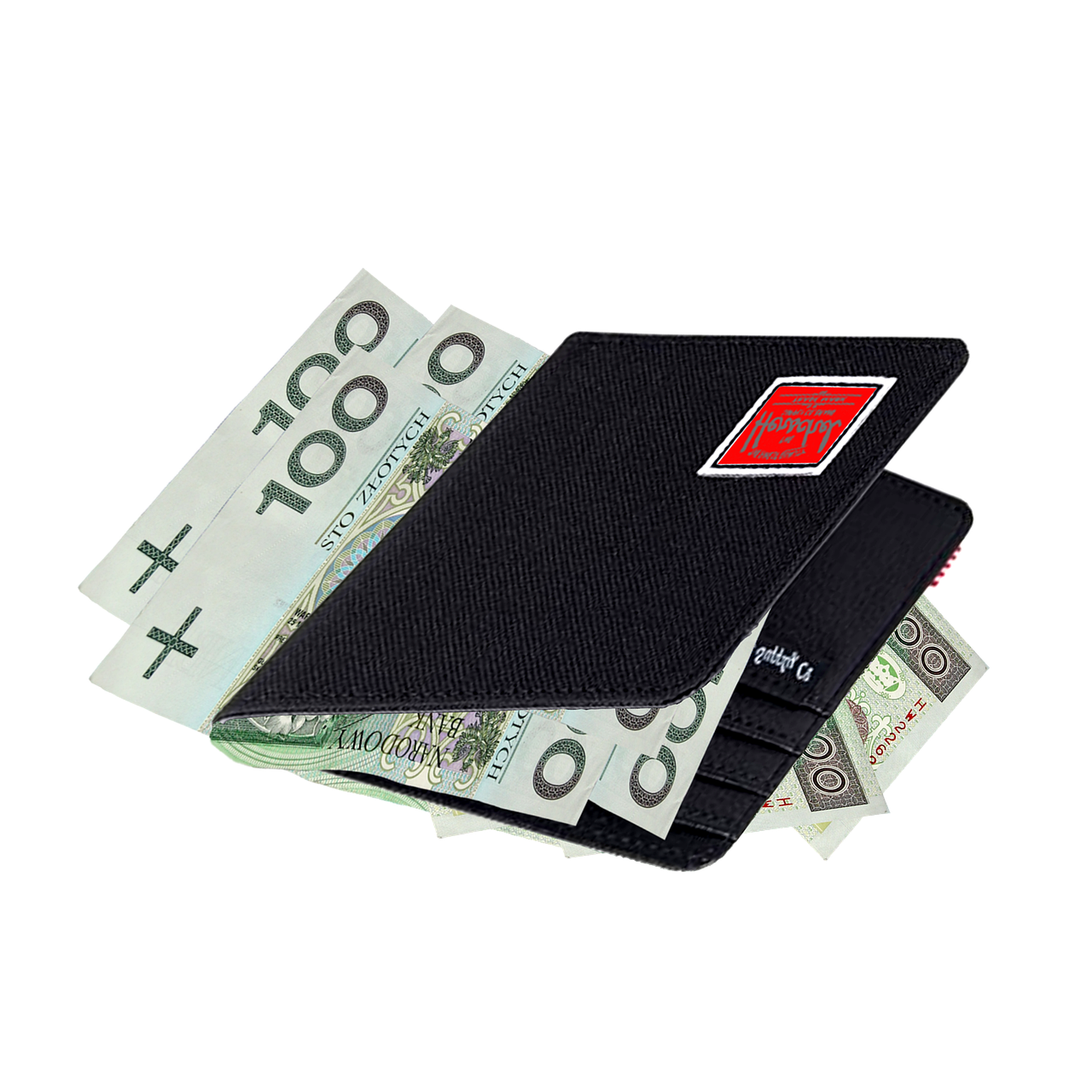The Best Wallets for Storing Stablecoins
Are you diving into the world of stablecoins and wondering where to keep your digital assets safe? You’re not alone! With the rise of cryptocurrencies, stablecoins have become a popular choice for those looking to maintain a stable value while enjoying the benefits of blockchain technology. In this article, we’ll explore various wallets that are ideal for securely storing stablecoins. We will discuss their features, security measures, and user experiences to help you choose the best option for your needs. So, let’s embark on this journey and find the perfect wallet for your stablecoins!
Stablecoins are cryptocurrencies designed to maintain a stable value against a fiat currency, such as the US dollar. Imagine having a digital asset that doesn’t fluctuate wildly like Bitcoin or Ethereum; that’s the magic of stablecoins! They serve as a bridge between traditional finance and the crypto world, making transactions smoother and more predictable. By providing a stable value, stablecoins offer a safe haven during market volatility, allowing users to hold their wealth without worrying about sudden drops in value. This section will explain their importance in the crypto ecosystem and how they differ from traditional cryptocurrencies.
When it comes to storing your stablecoins, choosing the right type of wallet is crucial. There are several types of wallets available for storing stablecoins, including hot wallets, cold wallets, and hardware wallets. Each type has its pros and cons, and understanding these can help you make an informed decision. Let’s break them down:
Hot wallets are connected to the internet, making them incredibly convenient for quick transactions. Imagine having your cash in a digital wallet that you can access anytime, anywhere! However, while they offer ease of use, they may pose security risks, as they are more vulnerable to hacking attempts. So, while hot wallets are great for daily transactions, it’s essential to be aware of the potential downsides.
Web wallets are accessible via a browser, allowing easy access to stablecoins from any device with internet connectivity. They often come with user-friendly interfaces, making them a popular choice for newcomers. However, security concerns are paramount here, as users must trust the service provider to keep their funds safe. Some popular web wallets include:
- Coinbase Wallet
- Binance Wallet
- MetaMask
While these options are convenient, always ensure you use strong passwords and enable two-factor authentication to enhance security.
Mobile wallets provide a portable solution for stablecoin storage, allowing you to carry your assets in your pocket. These apps are designed for easy usability, enabling quick transactions on the go. Popular mobile wallet apps include:
- Trust Wallet
- Exodus
- Coinomi
With mobile wallets, you can enjoy the convenience of managing your stablecoins from your smartphone, but remember to keep your device secure to avoid potential risks.
Cold wallets offer enhanced security by storing stablecoins offline. Think of them as a safe deposit box for your digital assets! This method is ideal for those who plan to hold their stablecoins for an extended period without making frequent transactions. Cold wallets can come in various forms, including paper wallets and hardware wallets, which we’ll explore in detail later.
Now that we’ve covered the types of wallets, let’s dive into some of the best wallets for storing stablecoins based on user reviews, security features, and ease of use. Here’s a curated list that will help you make an informed choice:
The Ledger Nano X is a popular hardware wallet known for its robust security features. It supports a wide range of stablecoins and provides a secure way to store your assets offline. Users rave about its user-friendly interface and Bluetooth connectivity, making it a great choice for both beginners and experienced users alike.
Exodus is a user-friendly software wallet that supports various stablecoins. Its sleek design and intuitive interface make it a favorite among beginners. With built-in exchange features, users can easily swap stablecoins for other cryptocurrencies without leaving the app. Plus, Exodus prioritizes security, giving users peace of mind while managing their assets.
1. What are stablecoins?
Stablecoins are cryptocurrencies designed to maintain a stable value against a fiat currency, helping users avoid the volatility typical of other cryptocurrencies.
2. Which wallet is best for beginners?
For beginners, mobile wallets like Exodus or web wallets like Coinbase are recommended due to their user-friendly interfaces.
3. Are cold wallets safer than hot wallets?
Yes, cold wallets are generally considered safer because they store assets offline, reducing the risk of hacking.
4. Can I store multiple types of cryptocurrencies in one wallet?
Many wallets support multiple cryptocurrencies, but it’s essential to check compatibility before choosing a wallet.

Understanding Stablecoins
Stablecoins are a fascinating subset of the cryptocurrency world, designed to maintain a stable value against a fiat currency, such as the US dollar or the euro. Imagine a seesaw where one side represents the volatility of traditional cryptocurrencies like Bitcoin and Ethereum, while the other side represents the stability of fiat currencies. Stablecoins aim to balance that seesaw, providing the best of both worlds: the security and transparency of blockchain technology combined with the stability of traditional currencies.
In the ever-evolving crypto ecosystem, stablecoins play a crucial role. They serve as a bridge between the volatile world of cryptocurrencies and the stability of fiat currencies. This makes them an ideal choice for traders who want to minimize risk while still participating in the cryptocurrency market. When the crypto market experiences wild price swings, stablecoins can act as a safe haven, allowing users to park their funds without converting back to fiat. This functionality is akin to having a safety net that allows you to take risks without the fear of falling too hard.
What sets stablecoins apart from traditional cryptocurrencies is their underlying mechanism for maintaining price stability. There are three primary types of stablecoins:
- Fiat-Collateralized Stablecoins: These stablecoins are backed 1:1 by a reserve of fiat currency, meaning for every stablecoin issued, there is an equivalent amount of fiat currency held in reserve. Examples include Tether (USDT) and USD Coin (USDC).
- Crypto-Collateralized Stablecoins: These are backed by other cryptocurrencies, which can be more volatile. To mitigate this risk, they are over-collateralized, meaning more cryptocurrency is held in reserve than the stablecoins issued. DAI is a popular example.
- Algorithmic Stablecoins: Unlike the previous types, algorithmic stablecoins are not backed by any collateral. Instead, they use algorithms to control the supply of the stablecoin, increasing or decreasing it based on demand. Examples include Terra (LUNA) and Ampleforth (AMPL).
Understanding these categories helps users make informed decisions about which stablecoin to use based on their needs and risk tolerance. Whether you’re looking to trade, invest, or simply store value, stablecoins offer a unique solution that traditional cryptocurrencies often can't provide.
In summary, stablecoins serve as a vital tool in the cryptocurrency landscape, allowing users to navigate the market's volatility with ease. By bridging the gap between fiat and crypto, they provide a stable foundation for transactions and investments. As we delve deeper into the various wallets available for storing these digital assets, it’s essential to remember the significance of choosing the right stablecoin for your financial goals.

Types of Wallets
When it comes to storing stablecoins, understanding the different types of wallets available is crucial. Each type serves a unique purpose and caters to different user needs. The world of cryptocurrency wallets can be a bit overwhelming, but fear not! We're here to break it down for you. Think of wallets as your personal vaults for digital assets, and just like any vault, the type you choose can significantly impact your security and convenience.
There are primarily three types of wallets you should be aware of: hot wallets, cold wallets, and hardware wallets. Each of these options comes with its own set of advantages and disadvantages. For instance, hot wallets are like the friendly neighborhood store—always open and accessible but with a slightly higher risk of theft. On the other hand, cold wallets are more like a safety deposit box—secure and private, but not as easy to access when you need to make a quick transaction.
Let’s dive deeper into these categories:
Hot wallets are connected to the internet, making them incredibly convenient for users who want to trade or use their stablecoins frequently. Imagine being able to whip out your smartphone or laptop and access your funds in seconds! However, this convenience comes at a cost. Because they are online, hot wallets are more susceptible to hacking and cyber threats. It's like leaving your front door unlocked while you run to the store—you're inviting trouble!
Web wallets are a type of hot wallet that you can access through your browser. They offer great accessibility since you can log in from any device with internet access. However, security is a concern; if the service provider experiences a breach, your funds could be at risk. Popular web wallets include Coinbase and Binance, which are user-friendly and widely trusted.
Mobile wallets take the convenience of hot wallets a step further. They are apps you can download on your smartphone, allowing you to carry your stablecoins wherever you go. Imagine having your crypto assets right in your pocket! While they are easy to use and perfect for everyday transactions, mobile wallets can also be vulnerable to malware and hacking. Some recommended mobile wallets include Trust Wallet and MetaMask.
Cold wallets, in contrast, are designed for long-term storage. They are not connected to the internet, which means they offer enhanced security against online threats. Think of cold wallets as a high-tech vault buried deep underground—very safe but a bit of a hassle to access when you want to make a transaction. Cold wallets are ideal for those who want to hold onto their stablecoins for an extended period without the need for frequent access.
There are several types of cold wallets, including:
- Paper Wallets: These are physical pieces of paper that contain your private and public keys. They are completely offline but can be lost or damaged.
- Hardware Wallets: Devices like the Ledger Nano X or Trezor that securely store your keys offline while providing easy access when needed.
In summary, choosing the right wallet for your stablecoins depends on how you plan to use them. If you’re a trader who needs quick access, hot wallets might be your best bet. For long-term holders, cold wallets provide the security you need. Understanding these types of wallets will help you make an informed decision that aligns with your cryptocurrency journey!

Hot Wallets
Hot wallets are the lifeline of the cryptocurrency world, offering the convenience of immediate access to your stablecoins. These wallets are connected to the internet, making them incredibly user-friendly for those who need to make quick transactions. Imagine needing to buy a cup of coffee with your stablecoins; a hot wallet lets you do that in seconds! However, this convenience comes with its own set of challenges. The very fact that they are online makes them vulnerable to security threats, such as hacks and phishing attacks. So, while hot wallets are great for everyday use, they require a cautious approach to ensure the safety of your assets.
When considering a hot wallet, it's essential to weigh the pros and cons. On the one hand, you enjoy instant access and ease of use, which is perfect for frequent traders or those who want to take advantage of market movements. On the other hand, the risk of online threats looms large. If you’re not careful, you could end up losing your hard-earned stablecoins in the blink of an eye. To put it simply, hot wallets are like leaving your front door unlocked; it’s convenient, but it invites trouble.
Within the realm of hot wallets, there are two primary types: web wallets and mobile wallets. Web wallets are accessible through browsers, allowing you to log in from any device. They are usually easy to set up and use, which is why many beginners gravitate toward them. However, their accessibility can be a double-edged sword; if someone gains access to your login information, they can easily swipe your funds. Popular web wallets include Coinbase and Binance, both of which have made a name for themselves in the crypto community.
On the flip side, we have mobile wallets, which are apps designed for smartphones. These wallets offer the same convenience as web wallets but with the added benefit of portability. Whether you’re at a café or on the go, your stablecoins are just a tap away. Some of the most recommended mobile wallets include Trust Wallet and Mycelium. Both provide a user-friendly interface and enhanced security features, making them favorites among mobile users.
In summary, hot wallets are a fantastic option for anyone looking to store stablecoins with quick access. They offer a blend of convenience and usability, perfect for those who engage frequently in transactions. However, always remember that with great convenience comes great responsibility. Protecting your wallet with strong passwords, enabling two-factor authentication, and being vigilant against phishing attacks are crucial steps to safeguard your assets. In the end, the choice of whether to use a hot wallet boils down to your personal needs and how you plan to interact with your stablecoins.

Web Wallets
When it comes to managing your stablecoins, offer an appealing mix of accessibility and convenience. These wallets operate through your web browser, allowing you to access your funds from anywhere with an internet connection. Imagine being able to check your balance or make a quick transaction while sipping coffee at your favorite café—sounds great, right? However, while this convenience is a major draw, it’s essential to weigh the security risks involved.
Web wallets are typically hosted by third-party services, which means that your private keys are often stored on their servers. This setup can expose you to potential risks, such as hacking or phishing attacks. Therefore, it’s crucial to choose a reputable provider that prioritizes security. Look for wallets that offer features like two-factor authentication (2FA), end-to-end encryption, and regular security audits. These measures can significantly enhance your protection against unauthorized access.
Some popular web wallets that support stablecoins include:
- Coinbase Wallet: Known for its user-friendly interface and robust security features, Coinbase Wallet allows you to manage various cryptocurrencies, including stablecoins. Its integration with the Coinbase exchange also makes it easy to buy and sell.
- MetaMask: While primarily known for Ethereum-based tokens, MetaMask also supports stablecoins like USDC. Its browser extension makes it a favorite among DeFi enthusiasts.
- Binance Wallet: As part of the Binance exchange ecosystem, this wallet provides seamless access to a wide range of stablecoins and other cryptocurrencies.
Despite their benefits, it’s essential to remember that web wallets are not ideal for long-term storage of large amounts of stablecoins. Instead, they work best for individuals who frequently engage in transactions or trading. If you plan to hold a significant amount of stablecoins for an extended period, consider transferring them to a more secure option, like a cold wallet.
In summary, web wallets can be a fantastic choice for users seeking quick access to their stablecoins. However, always remain vigilant about the security practices of the wallet provider you choose. By doing so, you can enjoy the convenience of web wallets while minimizing your exposure to potential risks.

Mobile Wallets
Mobile wallets have revolutionized the way we interact with stablecoins, offering a portable and convenient solution for managing digital assets. Imagine having your financial assets right at your fingertips, accessible anytime and anywhere! With just a few taps on your smartphone, you can send, receive, and store stablecoins without the need for bulky hardware or complicated setups. This ease of use is one of the primary reasons why mobile wallets have gained immense popularity among both seasoned crypto enthusiasts and newcomers alike.
One of the standout features of mobile wallets is their user-friendly interface. Most apps are designed with simplicity in mind, making it easy for anyone to navigate through their cryptocurrency holdings. For instance, you can quickly check your balance, review transaction history, and even exchange stablecoins for other cryptocurrencies or fiat currencies—all from your mobile device. This level of accessibility is akin to having a bank in your pocket, allowing you to manage your finances on the go.
However, while mobile wallets offer incredible convenience, they are not without their risks. Being connected to the internet means they can be vulnerable to hacking and phishing attacks. To mitigate these risks, it's essential to choose a reputable mobile wallet that prioritizes security. Look for wallets that offer two-factor authentication (2FA), biometric security features like fingerprint or facial recognition, and strong encryption protocols. Additionally, always keep your wallet app updated to protect against potential vulnerabilities.
When it comes to choosing the right mobile wallet for storing stablecoins, there are several options available. Here are some popular choices:
- Trust Wallet: Known for its extensive support for various cryptocurrencies, Trust Wallet is a favorite among users for its ease of use and strong security features.
- Coinomi: This wallet supports a wide range of assets and offers built-in exchange features, making it a versatile option for stablecoin holders.
- Atomic Wallet: With a simple interface and the ability to swap coins directly within the app, Atomic Wallet is a great choice for those who value convenience.
In conclusion, mobile wallets are an excellent choice for anyone looking to store stablecoins securely and conveniently. They combine functionality with accessibility, making it easier than ever to manage your digital assets. Just remember to prioritize security by choosing a reputable wallet, enabling protective features, and staying vigilant against potential threats. With the right mobile wallet, you can confidently navigate the world of stablecoins, whether you're making quick transactions or holding your assets long-term.
Here are some common questions about mobile wallets for storing stablecoins:
- Are mobile wallets safe for storing stablecoins? Yes, but safety depends on the wallet's security features. Always choose wallets with strong encryption and 2FA.
- Can I use a mobile wallet for multiple cryptocurrencies? Most mobile wallets support various cryptocurrencies, including stablecoins, allowing for diversified storage.
- What happens if I lose my phone? If your wallet has backup options, you can restore access to your funds using recovery phrases or keys.

Cold Wallets
When it comes to storing stablecoins securely, are often hailed as the gold standard. Unlike hot wallets, which are connected to the internet and can be vulnerable to hacking, cold wallets keep your assets offline, significantly reducing the risk of unauthorized access. Imagine storing your money in a safe rather than keeping it in your pocket while walking through a crowded market. That’s the essence of how cold wallets operate. They are perfect for those who prioritize security over convenience.
Cold wallets come in various forms, each offering unique features that cater to different user needs. The most common types include hardware wallets and paper wallets. Hardware wallets, such as the Ledger Nano S or Trezor, are physical devices that store your cryptocurrency offline. They provide a user-friendly interface and often come with additional security features like PIN codes and recovery phrases. On the other hand, paper wallets involve printing your private keys and public addresses on paper, which you then store in a safe place. While they are immune to online threats, they require careful handling to avoid physical damage or loss.
One of the standout benefits of cold wallets is their ability to protect your stablecoins from potential cyber threats. Since they are not connected to the internet, the chances of falling prey to phishing attacks or malware are drastically minimized. This is especially important for stablecoins, which are often used for trading or as a store of value. However, it's worth noting that while cold wallets excel in security, they may lack the immediate accessibility that hot wallets offer. If you need to make a quick transaction, you might find it cumbersome to transfer your assets from a cold wallet to a hot wallet.
For those considering a cold wallet, here are some key factors to keep in mind:
- Security Features: Look for wallets that offer robust security measures, such as two-factor authentication and encryption.
- User Experience: A wallet should be easy to set up and navigate, even for beginners.
- Compatibility: Ensure that the wallet supports the specific stablecoins you wish to store.
In conclusion, cold wallets are an excellent choice for anyone serious about safeguarding their stablecoins. While they may not offer the same convenience as hot wallets, the peace of mind that comes from knowing your assets are securely stored offline is invaluable. Whether you opt for a hardware wallet or a paper wallet, taking the time to choose the right cold wallet can make all the difference in protecting your investments.
1. What is a cold wallet?
A cold wallet is a type of cryptocurrency wallet that stores your digital assets offline, providing enhanced security against online threats.
2. Are cold wallets completely safe?
While cold wallets significantly reduce the risk of hacking, they are not entirely foolproof. It's essential to handle them carefully and keep backup recovery phrases secure.
3. Can I use a cold wallet for all types of cryptocurrencies?
Most cold wallets support a variety of cryptocurrencies, but it's crucial to check compatibility with specific stablecoins or tokens before purchasing.
4. How do I transfer funds from a cold wallet to a hot wallet?
To transfer funds, you will need to connect your cold wallet to a computer, access the wallet software, and follow the instructions for transferring assets to your hot wallet.

Top Wallet Recommendations
When it comes to storing stablecoins, choosing the right wallet is crucial for ensuring the security and accessibility of your digital assets. With so many options available, it can be overwhelming to find the perfect fit for your needs. To make your decision easier, we’ve curated a list of the top wallets that have garnered positive user reviews and are recognized for their robust security features and user-friendly interfaces. Let’s dive into two of the most recommended wallets that stand out in the crowded market.
The Ledger Nano X is a leading hardware wallet that has gained a reputation for its unparalleled security features. This wallet is designed to keep your stablecoins safe through advanced cryptographic technology. One of its standout features is its ability to support a wide range of cryptocurrencies, including popular stablecoins like USDT, USDC, and DAI. The Ledger Nano X also boasts Bluetooth functionality, allowing users to connect it to their mobile devices for on-the-go management of their assets.
Users appreciate the intuitive interface and the Ledger Live app, which provides real-time updates and easy transaction management. Furthermore, the device's secure chip keeps your private keys offline, making it nearly impossible for hackers to access your funds. If you're serious about protecting your investments, the Ledger Nano X is a fantastic choice that combines convenience with top-notch security.
On the other hand, if you’re looking for a wallet that’s perfect for beginners, the Exodus Wallet is an excellent option. This software wallet is known for its user-friendly interface, making it a favorite among those who are new to the world of cryptocurrencies. Exodus supports a variety of stablecoins and offers a seamless experience for managing your digital assets. One of the key features of Exodus is its built-in exchange, which allows users to swap between different cryptocurrencies without leaving the app.
Exodus also provides a high level of security through its private key management, ensuring that users retain full control over their funds. Additionally, it offers a mobile version, enabling users to manage their stablecoins from anywhere. The combination of ease of use, security, and functionality makes Exodus a great choice for anyone looking to store stablecoins efficiently.
As you consider the best wallet for your stablecoins, you might have some questions. Here are a few common queries that can help clarify your decision:
- What are stablecoins? Stablecoins are cryptocurrencies designed to maintain a stable value against a fiat currency, making them less volatile than traditional cryptocurrencies.
- Is a hardware wallet necessary? While not mandatory, hardware wallets like Ledger Nano X provide enhanced security by keeping your private keys offline, making them less susceptible to hacking.
- Can I use multiple wallets? Absolutely! Many users opt for a combination of wallets, such as a hardware wallet for long-term storage and a mobile wallet for daily transactions.
- Are software wallets safe? Software wallets, like Exodus, are generally safe, but they are more vulnerable to online threats compared to hardware wallets. Always ensure you follow best security practices.

Ledger Nano X
The is a standout choice in the world of hardware wallets, especially for those looking to store stablecoins securely. With its sleek design and advanced features, this wallet has become a favorite among both crypto enthusiasts and newcomers alike. One of the most appealing aspects of the Nano X is its robust security measures. It uses a secure chip (CC EAL5+) that is designed to withstand various types of attacks, ensuring that your assets are safe from prying eyes.
But what really sets the Ledger Nano X apart is its Bluetooth capability. This feature allows you to connect the wallet to your mobile device, giving you the flexibility to manage your stablecoins on the go. Imagine being able to check your balance or make transactions without having to plug your wallet into a computer. It’s convenience at its finest! However, some users may wonder if this wireless feature compromises security. The good news is that the Bluetooth connection is encrypted, providing an additional layer of safety.
When it comes to compatibility, the Ledger Nano X supports a wide range of stablecoins, including popular options like USDC, DAI, and Tether (USDT). This versatility makes it an excellent choice for users who want to diversify their holdings without juggling multiple wallets. The Ledger Live app, which accompanies the wallet, allows for seamless management of your assets. Users can easily send, receive, and exchange stablecoins, all from one intuitive interface.
Another noteworthy feature is the Ledger Nano X's ability to store over 1,800 different cryptocurrencies. If you’re someone who likes to dabble in various digital currencies, this wallet will cater to your needs. The user experience is further enhanced by the wallet’s large screen, which makes navigation a breeze. You won’t find yourself squinting at tiny text or struggling to decipher what’s on the display.
However, like any product, the Ledger Nano X is not without its drawbacks. The price point is higher than some of its competitors, which might deter budget-conscious users. Yet, considering the security features and overall functionality, many believe it’s worth the investment. After all, when it comes to storing your hard-earned assets, can you really put a price on peace of mind?
In summary, the Ledger Nano X is a top-tier hardware wallet that combines security, usability, and compatibility into one sleek package. Whether you’re a seasoned investor or just starting your journey in the crypto world, this wallet can meet your needs. With its advanced security features and user-friendly interface, it’s a solid choice for anyone looking to store stablecoins safely.
Here are some common questions that users often have about the Ledger Nano X:
- Is the Ledger Nano X worth the price? - Many users believe that the security features and versatility justify the investment.
- Can I use the Ledger Nano X with my smartphone? - Yes, the device offers Bluetooth connectivity, enabling use with mobile devices.
- How many cryptocurrencies can I store on the Ledger Nano X? - You can store over 1,800 different cryptocurrencies, including various stablecoins.
- Is my data safe with the Ledger Nano X? - Yes, the wallet uses advanced encryption and secure chips to protect your data and assets.

Exodus Wallet
The has carved out a niche for itself in the crowded world of cryptocurrency wallets, particularly for those looking to store stablecoins. What makes Exodus truly stand out is its user-friendly interface that appeals to both beginners and seasoned crypto enthusiasts alike. Imagine having a digital wallet that feels like a well-organized purse, where everything is easy to find and access. That's Exodus for you!
One of the most notable features of Exodus is its ability to support a variety of stablecoins, including popular options like USDC and DAI. This flexibility allows users to manage their digital assets all in one place, making it incredibly convenient. But, it’s not just about convenience; Exodus also prioritizes security. Users maintain control over their private keys, meaning that your funds are only as accessible as you choose to make them. This is akin to having a safe deposit box for your valuables—only you have the key!
Additionally, Exodus offers a built-in exchange feature, allowing users to swap between different cryptocurrencies without leaving the wallet. This can be a game-changer for those looking to capitalize on market fluctuations quickly. However, while this feature is incredibly handy, it’s essential to note that it may come with higher fees compared to other exchanges. Think of it as paying a premium for the convenience of a drive-thru coffee shop versus brewing your own coffee at home.
Exodus is also available as a mobile app, which means you can manage your stablecoins on the go. The mobile interface is designed to be just as intuitive as the desktop version, making it easy to check your balances or make transactions whenever you need to. This portability is particularly useful for those who are actively trading or using stablecoins for everyday purchases.
In terms of community support, Exodus has cultivated a robust user base and offers extensive resources for troubleshooting and education. Their customer support is often praised for being responsive and helpful, which is a significant advantage for anyone new to the crypto scene. In a world where many wallets leave users to figure things out on their own, Exodus shines like a beacon of support.
However, it's crucial to weigh these benefits against potential drawbacks. While Exodus is excellent for beginners and casual users, those who prioritize maximum security might consider using a hardware wallet in conjunction with Exodus for larger holdings. After all, it’s always wise to keep your important assets in a safe place, just like you wouldn’t keep all your cash in your wallet.
In summary, the Exodus Wallet presents a compelling choice for anyone looking to store stablecoins. With its user-friendly design, strong security measures, and built-in exchange feature, it’s no wonder that Exodus has garnered a loyal following. Whether you’re just starting your crypto journey or you’re a seasoned trader, Exodus makes managing stablecoins feel as easy as pie.
- Is Exodus Wallet safe for storing stablecoins? Yes, Exodus allows users to control their private keys, enhancing security. However, always consider using additional security measures.
- Can I use Exodus on my mobile device? Absolutely! Exodus has a mobile app that mirrors its desktop functionality, allowing you to manage your assets on the go.
- Does Exodus support all stablecoins? While Exodus supports a variety of stablecoins, be sure to check their official website for the most updated list of supported assets.
- Are the fees for exchanging cryptocurrencies high? Exodus may charge higher fees for in-wallet exchanges compared to traditional exchanges, so it’s worth comparing options if you plan to trade frequently.
Frequently Asked Questions
-
What are stablecoins and why are they important?
Stablecoins are cryptocurrencies designed to maintain a stable value against a fiat currency, like the US dollar. They are essential in the crypto ecosystem because they provide a safe haven during market volatility. Think of them as the calm in the storm—while other cryptocurrencies may fluctuate wildly, stablecoins remain steady, making them perfect for transactions and saving.
-
What types of wallets can I use to store stablecoins?
You can choose from several types of wallets to store your stablecoins, including hot wallets, cold wallets, and hardware wallets. Hot wallets, like web and mobile wallets, are great for quick access but come with security risks. On the other hand, cold wallets offer enhanced security by keeping your stablecoins offline, making them ideal for long-term storage.
-
Are hot wallets safe for storing stablecoins?
Hot wallets are convenient for quick transactions, but they are connected to the internet, which makes them vulnerable to hacks and cyber threats. If you plan to use stablecoins for everyday transactions, a hot wallet might be suitable. However, for larger amounts or long-term holding, consider using a cold wallet for added security.
-
What is the difference between a web wallet and a mobile wallet?
A web wallet is accessed through a browser, allowing you to manage your stablecoins from any device with internet access. In contrast, a mobile wallet is an app on your smartphone, providing a portable solution for carrying your stablecoins wherever you go. Both have their benefits, so it depends on your lifestyle and how you plan to use your stablecoins.
-
Can I use hardware wallets for stablecoins?
Absolutely! Hardware wallets, like the Ledger Nano X, are excellent for securely storing stablecoins. They keep your private keys offline, which significantly reduces the risk of hacks. If you’re serious about security and plan to hold stablecoins for a long time, investing in a hardware wallet is a smart move.
-
What should I consider when choosing a wallet for stablecoins?
When selecting a wallet, consider factors like security features, ease of use, compatibility with different stablecoins, and community reviews. It’s essential to choose a wallet that fits your needs, whether you prioritize quick access or long-term security. Always do your research to ensure you’re making an informed decision!
-
Are there any fees associated with using stablecoin wallets?
Yes, many wallets may charge fees for transactions, exchanges, or withdrawals. These fees can vary depending on the wallet provider and the type of wallet you’re using. Always check the fee structure before committing to a wallet to avoid any surprises down the line!
-
How do I backup my stablecoin wallet?
Backing up your wallet is crucial to ensure you don’t lose access to your stablecoins. Most wallets provide a recovery phrase or seed phrase during setup. Make sure to write this down and store it in a safe place. If you ever lose access to your wallet, this phrase will allow you to recover your funds.



















